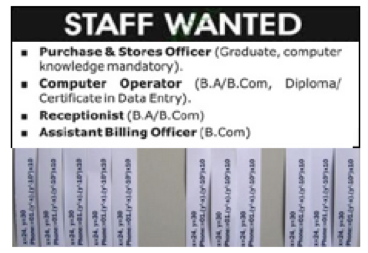I graduated college in 1987 but still remember the thrill of landing my first job. After visiting the local employment center half-a-dozen times, I wound up working there – as supervisor of my small town employment center for students.
| We mostly pinned job ads to cork boards, and when we were feeling creative (or bored) we went to the malls and stuck them under car windshields. You still had to visit the center to apply for jobs though – in the stone age, volume of traffic was a key metric.
These days, even though we advertise and look for jobs online – more like the Jetsons than the Flintstones – we measure staffing like we’re still in Bedrock (Fred and Wilma Flintstone’s home town for those of you born this century). |
 |
At the job center we counted visitors, just like we count eyeballs to our ads and traffic to our career websites today. We also counted how many phone stubs were torn off the bottom of ads, much like we now track “click-thrus.” We sometimes followed up with employers too, giving us a vague sense of applicants per posting and whether we were helpful as a source for good candidates.
My point is, many of the metrics we used in the old post and pray world of job centers still drive today’s post and pray world of job boards and career sites. And that’s fine, except everything’s changing. Big data, algorithms and A.I. – a.k.a, “programmatic advertising” – already determine most of the ads you see on the web and they’ll soon dominate the world of recruitment advertising.
When that happens, and it’s coming soon, it will still be nice to know “how many” and “where from,” but as recruiters, we’ll need to know “what quality?” Not quality of hire – that’s outside our control – but rather quality of applicant and, more to the point, cost per quality applicant.
Programmatic recruitment advertising means outsourcing the work of deciding when and where job ads get placed and, for the most part, what to pay for them. As above, algorithms optimize that for you. So rather than worrying about number of impressions or cost-per-click, you track cost-per-applicant, and ideally, cost-per-quality applicant.
Even the vaunted source effectiveness metric diminishes in importance in favor of measures that assess the efficiency and effectiveness of programmatic platform providers themselves. After all, where your ad is seen is less important than the quality of the applicants it produces.
These and other new metrics reflect the more strategic and creative role recruiters will play when relieved of the mundane tasks involved in ad placement and tracking. As programmatic recruitment advertising grows and the technology improves, recruiters will learn new ways of working and will use new metrics to measure their progress.
I’ve taken my best guess at some of the new KPI’s in a white paper called “Recruitment Analytics in a Programmatic Sourcing Era.” I’d love to hear what you think and what new measures you see coming. Use the discussion/comments tool below to share your thoughts.



